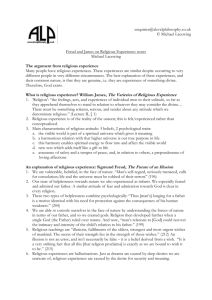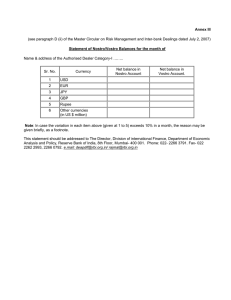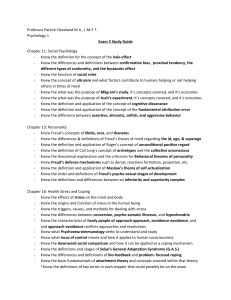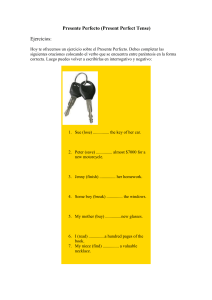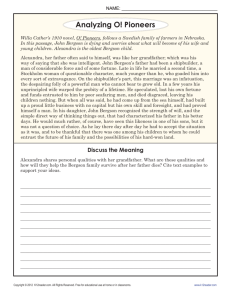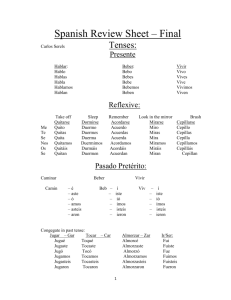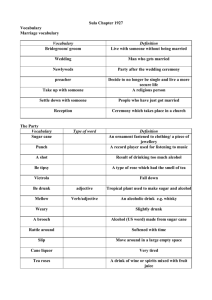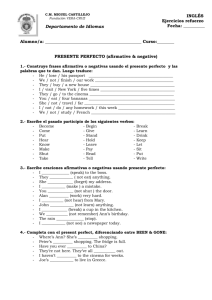The world picture: The Age of anxiety
advertisement
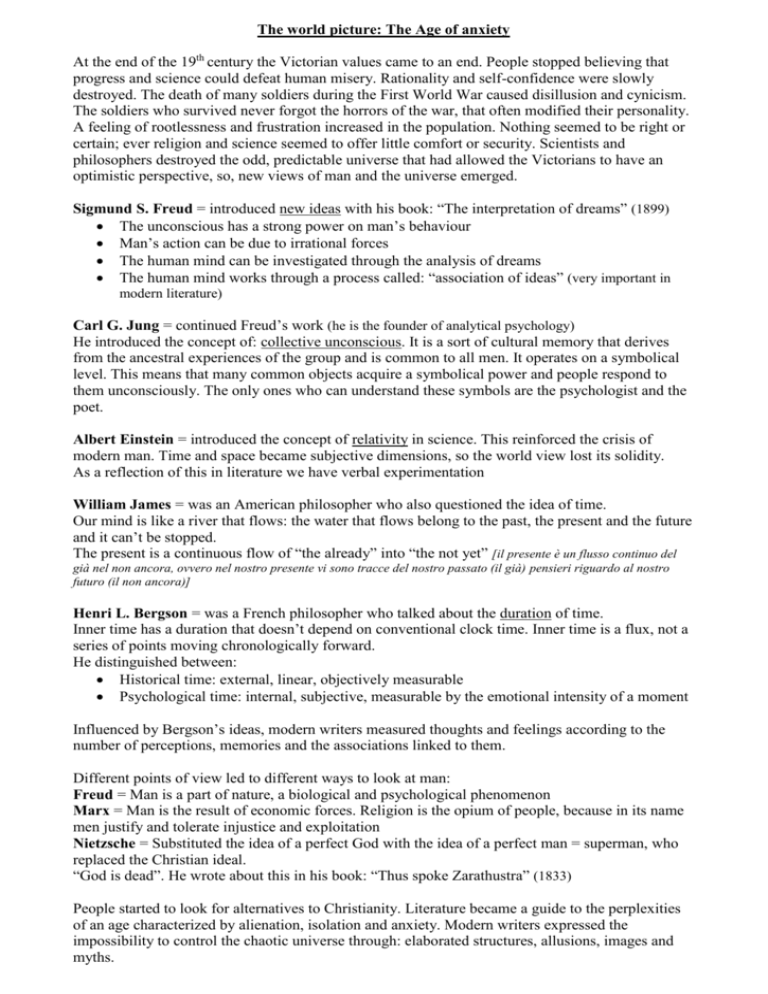
The world picture: The Age of anxiety At the end of the 19th century the Victorian values came to an end. People stopped believing that progress and science could defeat human misery. Rationality and self-confidence were slowly destroyed. The death of many soldiers during the First World War caused disillusion and cynicism. The soldiers who survived never forgot the horrors of the war, that often modified their personality. A feeling of rootlessness and frustration increased in the population. Nothing seemed to be right or certain; ever religion and science seemed to offer little comfort or security. Scientists and philosophers destroyed the odd, predictable universe that had allowed the Victorians to have an optimistic perspective, so, new views of man and the universe emerged. Sigmund S. Freud = introduced new ideas with his book: “The interpretation of dreams” (1899) The unconscious has a strong power on man’s behaviour Man’s action can be due to irrational forces The human mind can be investigated through the analysis of dreams The human mind works through a process called: “association of ideas” (very important in modern literature) Carl G. Jung = continued Freud’s work (he is the founder of analytical psychology) He introduced the concept of: collective unconscious. It is a sort of cultural memory that derives from the ancestral experiences of the group and is common to all men. It operates on a symbolical level. This means that many common objects acquire a symbolical power and people respond to them unconsciously. The only ones who can understand these symbols are the psychologist and the poet. Albert Einstein = introduced the concept of relativity in science. This reinforced the crisis of modern man. Time and space became subjective dimensions, so the world view lost its solidity. As a reflection of this in literature we have verbal experimentation William James = was an American philosopher who also questioned the idea of time. Our mind is like a river that flows: the water that flows belong to the past, the present and the future and it can’t be stopped. The present is a continuous flow of “the already” into “the not yet” [il presente è un flusso continuo del già nel non ancora, ovvero nel nostro presente vi sono tracce del nostro passato (il già) pensieri riguardo al nostro futuro (il non ancora)] Henri L. Bergson = was a French philosopher who talked about the duration of time. Inner time has a duration that doesn’t depend on conventional clock time. Inner time is a flux, not a series of points moving chronologically forward. He distinguished between: Historical time: external, linear, objectively measurable Psychological time: internal, subjective, measurable by the emotional intensity of a moment Influenced by Bergson’s ideas, modern writers measured thoughts and feelings according to the number of perceptions, memories and the associations linked to them. Different points of view led to different ways to look at man: Freud = Man is a part of nature, a biological and psychological phenomenon Marx = Man is the result of economic forces. Religion is the opium of people, because in its name men justify and tolerate injustice and exploitation Nietzsche = Substituted the idea of a perfect God with the idea of a perfect man = superman, who replaced the Christian ideal. “God is dead”. He wrote about this in his book: “Thus spoke Zarathustra” (1833) People started to look for alternatives to Christianity. Literature became a guide to the perplexities of an age characterized by alienation, isolation and anxiety. Modern writers expressed the impossibility to control the chaotic universe through: elaborated structures, allusions, images and myths.
